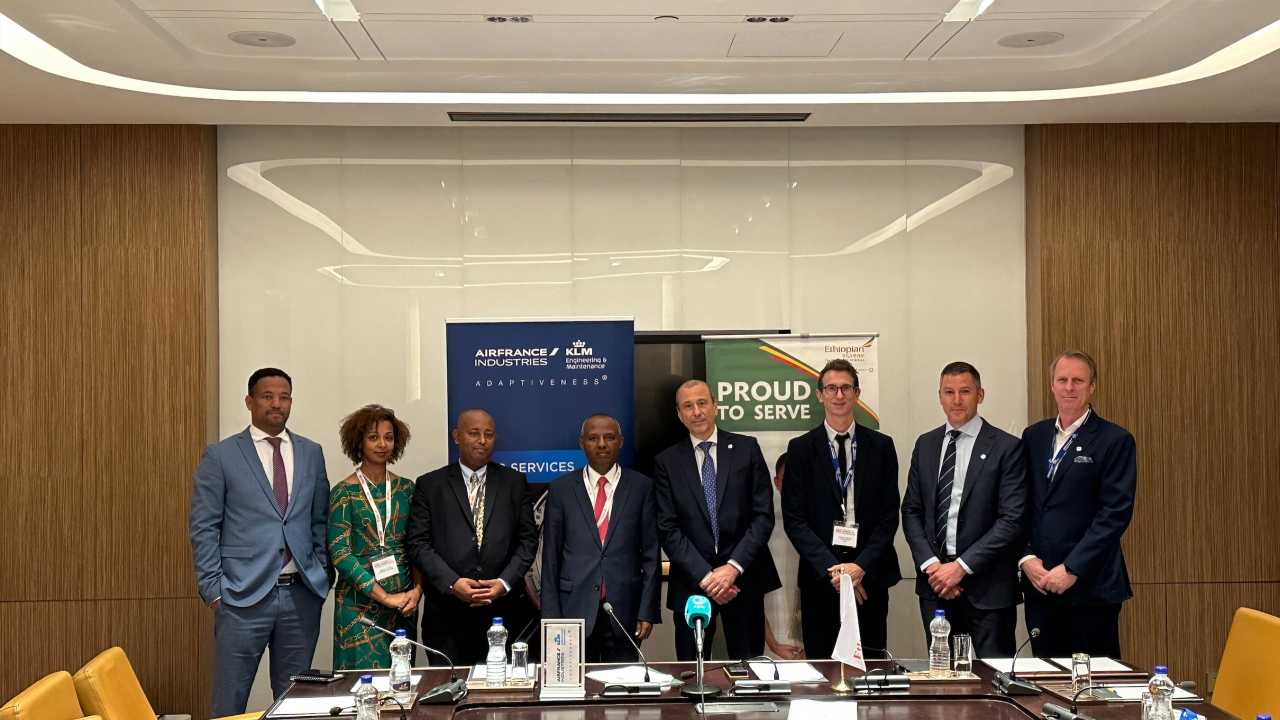Maintaining the pressure to improve facilities.
Pressure is mounting for increased MRO facilities in west Africa. Chukwu Emeke has been looking into the situation.

The maintenance, repair and overhaul (MRO) situation in Nigeria poses a concern to stakeholders as some airlines in the sub-region have actually had to abandon aircraft taken abroad for routine maintenance because of their inability to pay the bills.
Those aircraft are now languishing at facilities in Europe, South Africa, the Middle East and the United States.
Research reveals that about 25% of aircraft owned by Nigeria’s commercial airline operators are on the ground (AOG), either because they are no longer airworthy or are due for maintenance.
The low value of the Nigerian currency, and new foreign exchange (forex) policies, did not help Nigeria’s airlines in 2016, according to Captain Nogie Megisson, chairman of Airline Operators of Nigeria. He expressed fears about the safety implications of high maintenance costs amidst forex issues, about which Nigeria’s Aviation Ministry says it is liaising with the Central Bank.
Fears about huge maintenance costs are not unfounded. It costs a Nigerian airline almost four times what it would cost a similar carrier in the US to change an aircraft nose-wheel. Investigations reveal that airlines pay a minimum of $500,000 for engine overhaul and about the same amount for C-check maintenance. Considering the limited profit margin, powered by high charges from government agencies, multiple taxes and high fuel costs, raising funds for maintenance is a huge challenge to Nigerian operators. The situation has been further compounded in recent years by the developing apathy of financial institutions towards aviation investment in Nigeria.
Aero, the oldest non-government airline in Nigeria, suspended operations indefinitely in August 2016. Its CEO, Captain Fola Akinkuotu, had earlier that month raised an alarm during his presentation at an aviation round table quarterly breakfast meeting, saying that maintenance costs were taking up more than 25% of the airline’s operating cost as aircraft parts and engines were all imported. “If you have any component of your cost that is more than 25%, you had better watch it,” he had warned.
Nigeria’s Minister of State, Aviation, Hadi Sirika, sounded an optimistic note, saying that the establishment of an MRO centre was one of the major objectives of his leadership. “We have made a case for a full-fledged private sector-driven MRO facility. The cost of maintenance will be reduced if we establish an MRO within our sub-region,” he said.
However, Captain Jari Williams, CEO of Bicourtney Aviation Services, and a pioneer member of the team that established the MRO facility at Akwa Ibom Airport in Uyo, Nigeria, expressed doubts about the government’s commitment.
He said private investment in MRO facilities required government subvention, tax waivers, low interest rates, security, stakeholder engagement and other incentives, which were very difficult to secure in the process of establishing the Uyo facility.
“It is impossible for you to start an MRO without the buy-in of stakeholders,” he said, advising Nigeria’s Government to take advantage of the Uyo facility by simply providing the needed equipment and personnel.
Captain Sidi Abdullahi, director of operations for the Nigerian Civil Aviation Authority (NCAA), called for a proper analysis of MRO requirements in the region before embarking on the project. He explained that instability of economic viability affected MRO costs and that airlines in the region, which were defective in planning, would need to change.
However, there are signs that things may be improving. Ghanaian President, John Mahama, revealed recently, while commissioning the first phase of upgrade at the Tamale Airport, that it would be used as a maintenance and servicing centre for aircraft across west Africa.
“We intend to make Tamale Airport a regional aircraft maintenance facility so that aircraft will come from all over the region to do their maintenance and servicing here,” he said.
Togo-based Asky Airlines, and its shareholder, Ethiopian Airlines, are also planning to establish an aircraft MRO and training centre in west Africa. Ethiopian CEO, Tewolde Gebremariam, said Asky was in talks with the Togolese Government and, if approved, the MRO facility there would cater for Boeing and Bombardier aircraft.
He said Ethiopian’s main MRO hub remained in Addis Ababa but that the airline would have regional MROs in Lome, Lilongwe and Kigali, adding that the planned Lome hub would maintain aircraft operating in Nigeria, Ghana, Côte d'Ivoire and Senegal.
IAG also plans to establish an MRO facility in Abuja, Nigeria.
Meanwhile, the Caverton Offshore Support Group is on course to provide a new MRO facility at its Ikeja base.
“Construction kicked off last year and we are on track to deliver on our promise by having the commercial MRO centre and training school fully operational by 2018,” said chairman Aderemi Makanjuola.
Onedot Aviation CEO, Captain Henry Oludotun Ogunyemi, estimated Nigeria would save more than $9 million annually if airlines in the country could carry out heavy maintenance on their aircraft locally.
He said his company has received NCAA approval to carry out both line and heavy maintenance checks for Beechcraft, HS-125, and Bombardier aircraft, among others, since 2014, and added that the Boeing 737-200 Series and Boeing 737-300/400/500 Series had been approved in June 2016.
He encouraged other domestic airlines to patronise local MROs.
Stay up to date
Subscribe to the free Times Aerospace newsletter and receive the latest content every week. We'll never share your email address.

